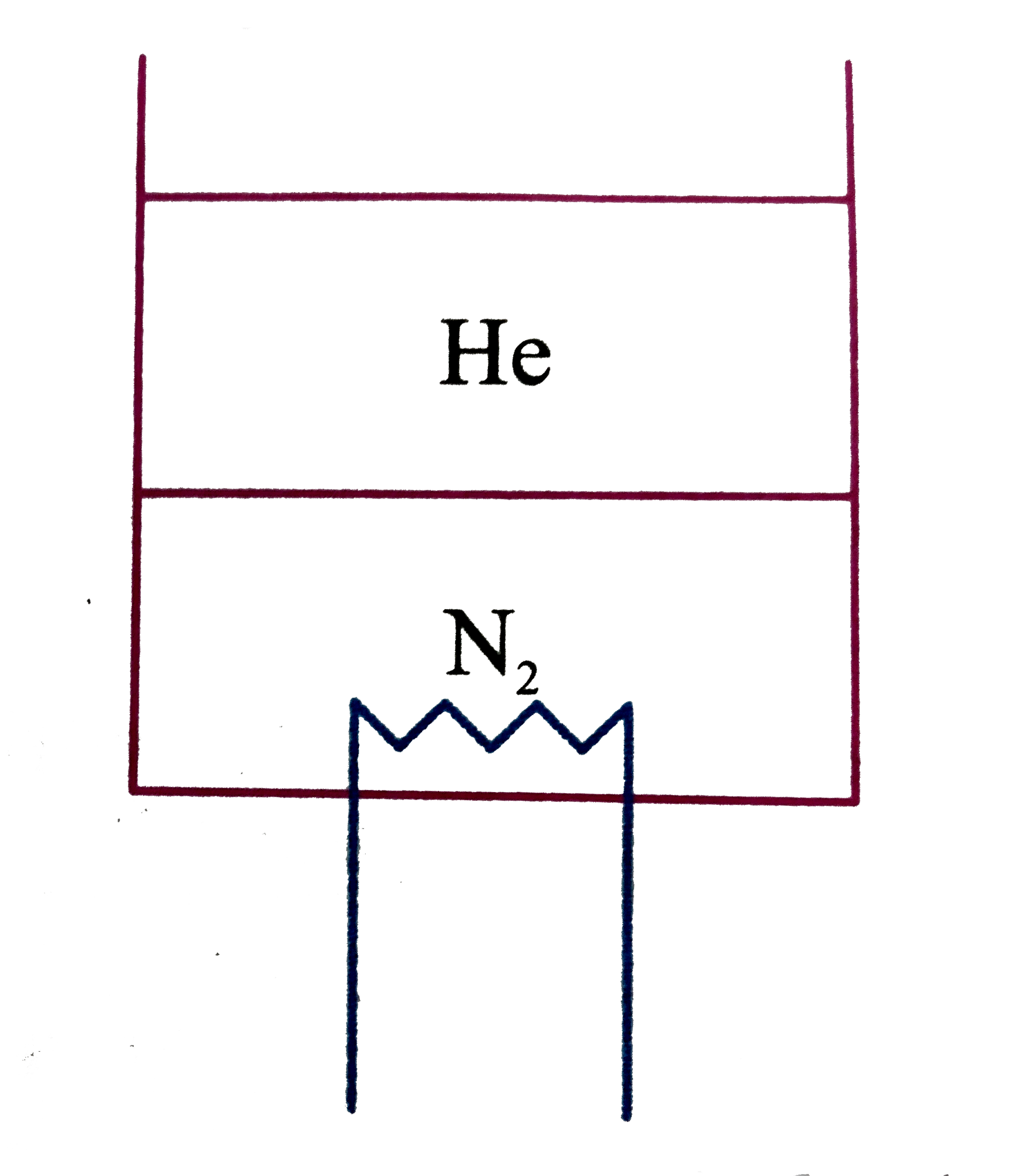If η=50% of oxygen gas kept in an adiabatic rigid container gets converted into ozone (O3). Then which of the following quantities of this gas sample will change.
Volume
Pressure
Average velocity
Average momentum
The correct Answer is:B
To solve the problem, we need to analyze the situation where 50% of oxygen gas (O2) in an adiabatic rigid container is converted into ozone (O3). We will look at the quantities that may change as a result of this conversion.
1. Understanding the System:
- The container is adiabatic, meaning there is no heat exchange with the surroundings (ΔQ = 0).
- The container is rigid, indicating that the volume of the gas does not change.
2. Adiabatic Process:
- For an adiabatic process, the relationship between pressure (P), volume (V), and temperature (T) can be described by the equation PVγ=constant, where γ (gamma) is the adiabatic index.
3. Conversion of O2 to O3:
- When 50% of O2 is converted into O3, the number of moles of gas changes. O3 is more stable than O2, which implies that it has a lower degree of freedom.
4. Effect on Degrees of Freedom:
- The degree of freedom (F) for O2 is higher than that for O3. Since γ is related to the degree of freedom (γ = 1 + 2/F), a decrease in degrees of freedom leads to an increase in γ.
5. Pressure Change:
- Since the volume is constant and γ has increased due to the conversion, we can infer from the equation P∝V−γ that the pressure (P) must decrease as γ increases.
6. Average Velocity:
- The average velocity of gas molecules is determined by their random motion. Since the conversion does not affect the random motion of the remaining gas molecules, the average velocity remains zero.
7. Average Momentum:
- Average momentum is calculated as the product of mass and velocity. Since the average velocity is zero, the average momentum will also remain zero.
8. Conclusion:
- The only quantity that changes in this process is the pressure of the gas sample. The volume remains constant, and both the average velocity and average momentum remain unchanged.
Final Answer:
The quantity that will change is pressure.
---
- The container is adiabatic, meaning there is no heat exchange with the surroundings (ΔQ = 0).
- The container is rigid, indicating that the volume of the gas does not change.
- For an adiabatic process, the relationship between pressure (P), volume (V), and temperature (T) can be described by the equation PVγ=constant, where γ (gamma) is the adiabatic index.
- When 50% of O2 is converted into O3, the number of moles of gas changes. O3 is more stable than O2, which implies that it has a lower degree of freedom.
- The degree of freedom (F) for O2 is higher than that for O3. Since γ is related to the degree of freedom (γ = 1 + 2/F), a decrease in degrees of freedom leads to an increase in γ.
- Since the volume is constant and γ has increased due to the conversion, we can infer from the equation P∝V−γ that the pressure (P) must decrease as γ increases.
- The average velocity of gas molecules is determined by their random motion. Since the conversion does not affect the random motion of the remaining gas molecules, the average velocity remains zero.
- Average momentum is calculated as the product of mass and velocity. Since the average velocity is zero, the average momentum will also remain zero.
- The only quantity that changes in this process is the pressure of the gas sample. The volume remains constant, and both the average velocity and average momentum remain unchanged.
The quantity that will change is pressure.
Topper's Solved these Questions
Similar Questions
A gas undergoes a change at constant temperature. Which of the following quantities remain fixed ?
View SolutionWhich of the following metals gives N2O gas with dilute HNO3 ?
View SolutionThree moles of an diatomic gas are in a closed rigid container at temperature T (in K). 1 mole of diatomic gas gets dissociated into atoms without appreciable change in temperature. Now heat is supplied to the gas and temperature becomes 2T. If the heat supplied to the gas is x(RT), find the value of x.
View SolutionThe following reaction is used for the preparation of oxygen gas in the laboratory
2KClO3(s)Heat−−−−→Catalyst2KCl(s)+3O2(g)
Which of the following statement(s) is/are not correct about the reaction?View SolutionThe following reaction is used for the preparation of oxygen gas in the laboratory
2KClO3(s)Heat−−−−→Catalyst2KCl(s)+3O2(g)
Which of the following statement(s) is/are correct about the reaction?View SolutionWhen silent electric discharge is passed through O2 gas, it converts into O3 .If the density of the final sample is 20 times the density of hydrogen gas under similar conditions, calculate the mass percent of O2 in the final sample.
View SolutionAt STP, 11 g of carbon dioxide gas (molar mass of CO2=44gmol−1) is filled in a container. Compute the following quantities of the gas.
Number of carbon and oxygen atomsView Solution5 moles of nitrogen gas are enclosed in an adiabatic cylindrical vessel. The piston itself is a rigid light cylindrical container containing 3 moles of helium gas. There is a heater which given out a power of 100 cal of which 30 cal is transferred to helium through the bottom surface of the piston. The rate of increment of temperature of the nitrogen gas assuming that the piston moves slowly is
 View Solution
View SolutionThe change in internal energy of a gas kept in a closed container when 50 cal heat is supplied to it is
View Solution100g sample of clay (containing 19% H2O, 40% silica, and inert inpurities as rest) is partically dried so as to contains 10% H2O.
Which of the following is/are correct statements (s) ?View Solution

